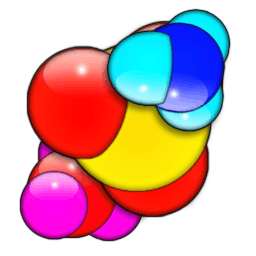We hebben weer stroom, dus laat ik de stats weer eens posten.
Gister kwam ik dit stukje nostalgie tegen via
olduse.net welke ik met jullie wil delen:
Message-ID: <928@Aunc.UUCP>
Newsgroups: NET.general,net.general
Path: utzoo!duke!unc!wm
Date: Tue Jun 23 22:37:54 1981
Subject: Digital audio
From: wm
X-OldUsenet-Modified: added From; converted from A-news; fixed
Message-ID; added Xref
Xref: dummy dummy:1
[from Electronic Design, June 25.]
SONY AND PHILIPS AGREE TO DIGITAL AUDIO PLAYBACK FORMAT
[contributor note: Sony brought you both versions of the video cassette,
and Philips brought you the familiar audio cassette]
Insisting that 16 bits will be the standard for digital audio-playback
systems, even for home use, Sony Corp. and Philips have announced an
agreement on a PCM serial-data system format for home digital audio-
playback systems. ... similar to Philips video disk ... uses a laser
sensor, a pulse-code-modulation decoder, ... and a high-resolution
digital-to-analog converter. ... Both companies demonstrated prototypes
... will likely not be available to consumers until the fall of 1982.
... While both manufacturers decline to project prices for the first
generation of digital audio playback units, they do say that prices
will be "comparable to the highest-quality conventional high-fidelity
record players." (That would put them in the $600 range, by today's
standards.) ...
While both manufacturers concede that 14-bit (and in some cases, a
12-bit) decoding scheme may be perfectly acceptable for many home
audio applications, Sony officials are firm in their belief that the
very first commercial products -- and, inevitably, all top-of-the-line
models -- will embody a 16-bit linear d-a converter. ...
the playback system ... [is] designed to retrieve information encoded
on a 4.7 inch (12 cm)-diameter disk. ... Bandwidth is greater than
20kHz, ... dynamic range better than 90dB, ... signal-to-noise
[also] better than 90dB. Total harmonic distorton of the system
is less than 0.05%. [Several other manufacturers] have agreed to the
Sony-Philips standard. Recording time is up to one hour per side.
An alternative to the Sony-Philips compact-disk scheme will be offered
by Digital Recording Corp. through its Soundstream subsidiary.
... uses optical encoding and playback ... 16 bits recording resolution,
but unlike the Sony-Philips scheme ... [the] "record" does not move.
The record consists of an opticallly encoded plastic card, approximately
3 by 5 inches and slightly thinner than a credit card. In the playback
scheme the stationary card rests flat on the surface of a clear window,
while a scanning mechanism reads the card. ... [Will] allow one hour
of information on one card. ... The stationary card makes itself
readily accessible for portable audio-playback applications, such as
car stereos, and for carousel type "record changer" applications.
The card ... [is] much easier and cheaper to produce than a ... disk.
The optical-card mechanism will [also] lend itself readily to other
types of data storage.
De grote vraag wat dit alternatief van Digital Recording Corp is, het collectief geheugen van het Internet lijkt dit formaat vergeten te zijn.
Om niet vergeten te worden is dagelijks bijdragen aan FAH een goed middel om nog voor lange tijd door het Internet onthouden te worden.
 DPC Folding@Home hitparade van 28 juni 2011
Mijlpalen
Folding@Home Links
DPC Folding@Home hitparade van 28 juni 2011
Mijlpalen
Folding@Home Links
Folding@Home webpage
Folding@Home forum
DPCH Suggestiepagina
DPC FAQ
Bron

:strip_icc():strip_exif()/u/26367/bubbles2.jpg?f=community)
:strip_icc():strip_exif()/u/34645/SkyWalkerTux.jpg?f=community)
/u/68265/tuxcool.png?f=community)
